As the terrain inclined, I had to remind myself to take in the view as I tried to catch my breath. Amongst the whirlwind of completing the first year of my Masters degree, I’d decided to take on the challenge of completing the Routeburn Track: a (literally) breathtaking hike nestled within Fiordland National Park, South Island, New Zealand.
The Routeburn Track is approximately 40 kilometres one way and reaches an elevation of 1, 255 metres at Harris Saddle (Tarahaka Whakatipu). The route starts at The Divide (a four hour drive from Queenstown), and after three days of hiking the track leisurely finishes at the Routeburn Shelter (an hour and half drive from Queenstown).
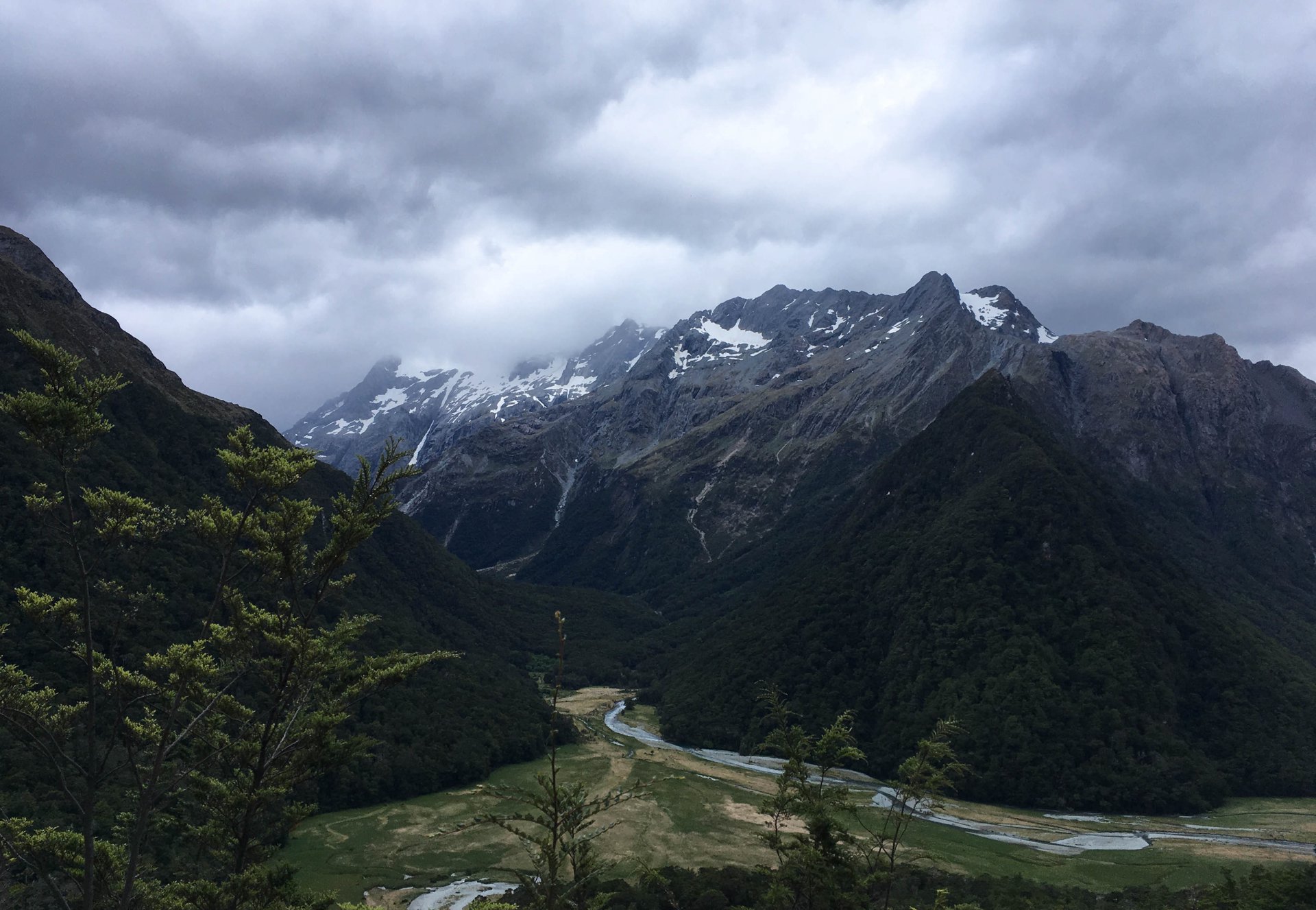
Blessed with what felt like a one-in-a-million chance of having great weather (apart from the odd rain-shower), I was set on meandering and exploring the landscape, the endless awe-inspiring views that constantly remind you to stop and take everything in.
As I walk along the track, a slightly different landscape is revealed around each corner, encouraging a gradually increasing appreciation for the holistic natural environment. Everything is connected to something else and relies on one another.
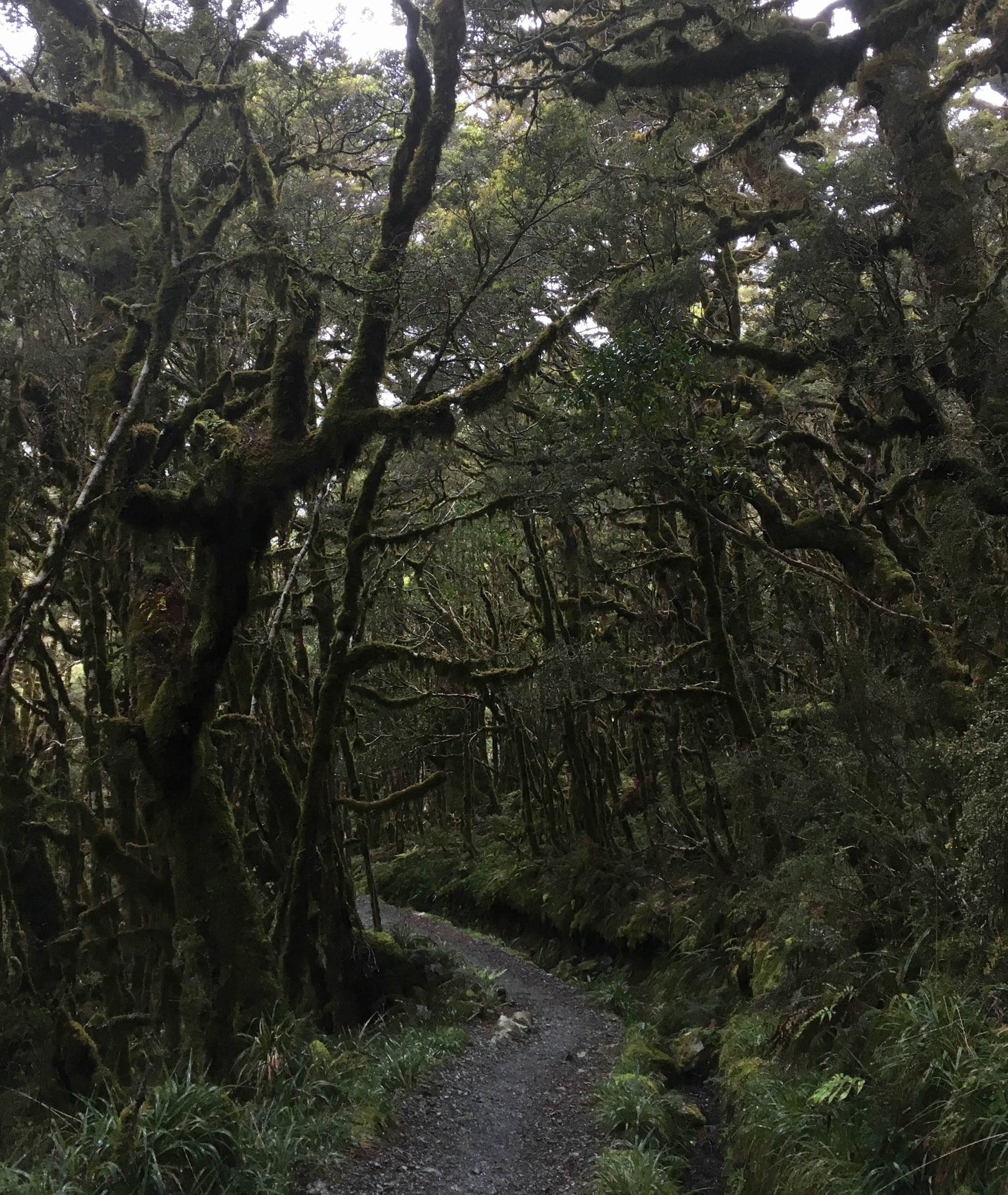
Green moss covers the surrounding alpine trees, providing an illusion that the landscape doesn’t continue beyond. Although, as I persevere, windows of blue sky are seen, hinting at the climb ahead and pushing me to continue to the next rest stop.
Earland Falls is one of the many waterfalls that provides the opportunity to get up close and personal with this landscape, and stands as the largest waterfall along the track. Appreciating the power of water falling 174 metres as it turns into mist is an unforgettable experience. As my senses overload, I’m reminded that where I’m walking is found within Te Wahipounamu, or the South West region of the New Zealand World Heritage Area.
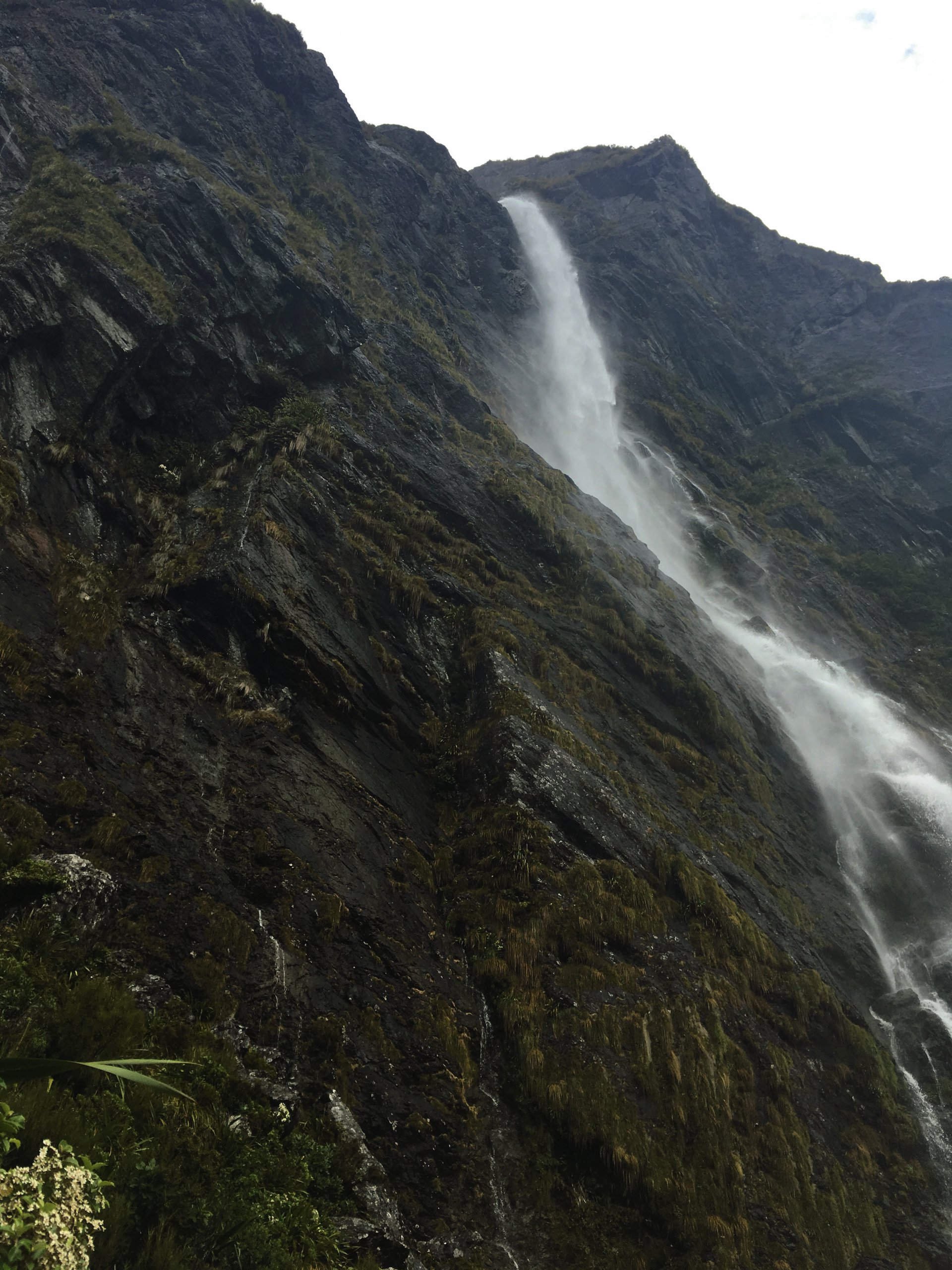
The outlook from the first campsite is where I collect my thoughts and take in the orange sun reflecting off the still water of Lake Mackenzie, preparing myself for the day ahead.
Once I reach the top of the spur (pictured below) after leaving Lake Mackenzie Hut, I have to pinch myself that I’m now walking above the tree line and have what seems to be a completely surreal, panoramic view of the Southern Alps. The idea of stopping and taking everything in really speaks for itself once you reach this part of the track. The scenery and tranquility is like no other as I make my way across and down the spur and along the ridge-line to Harris Saddle and Lake Harris.
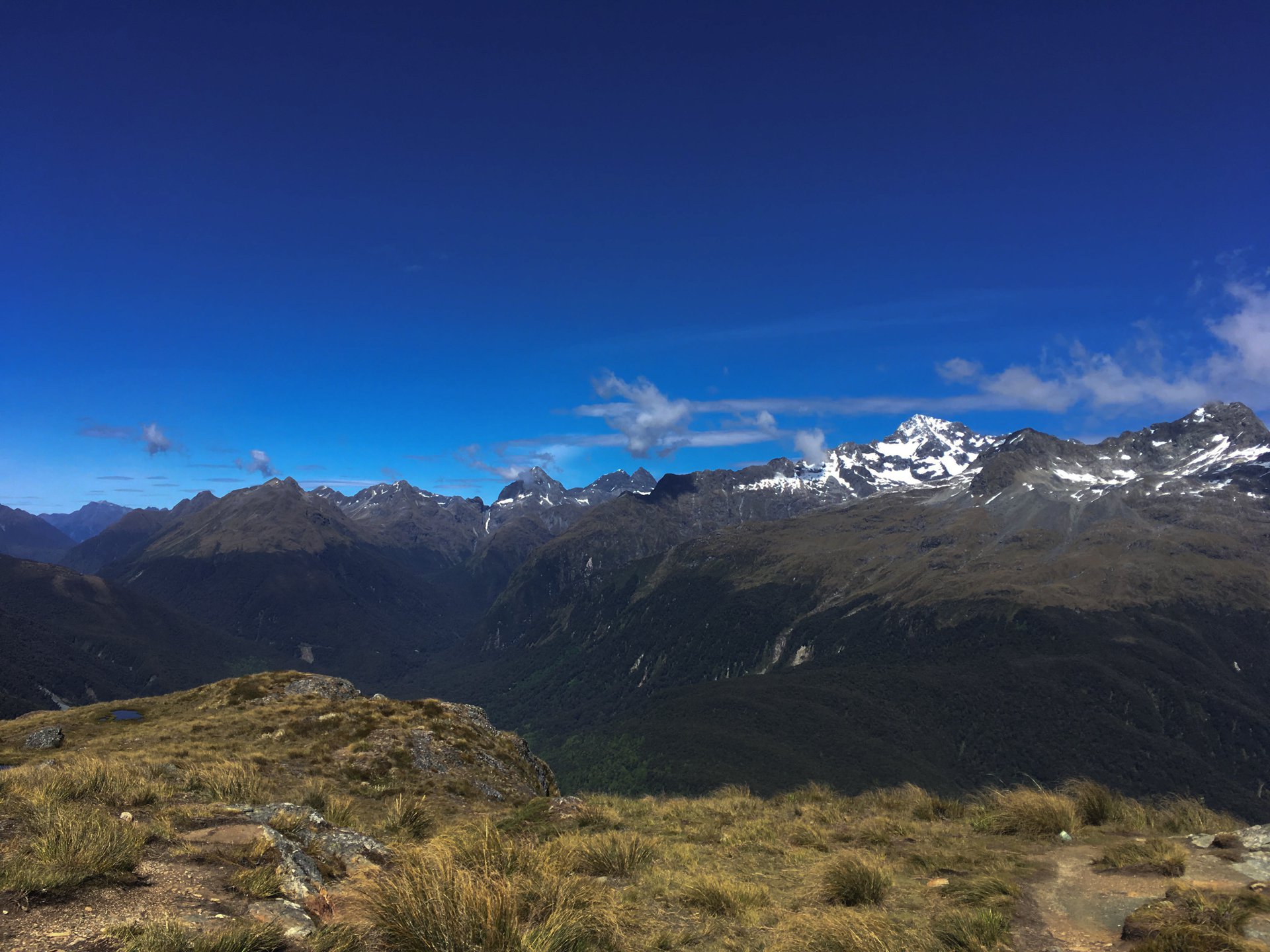
As I trek along the rock, gravel, and tree root-covered pathway, I find myself meandering through meadows, tarns and alpine gardens, all the while coming across the occasional stream or waterfall with the accompaniment of an array of flora and fauna endemic to the region. The flora constantly changes as I increase in altitude, ranging from beech forests to sub-alpine shrublands, alpine tarns and bogs.
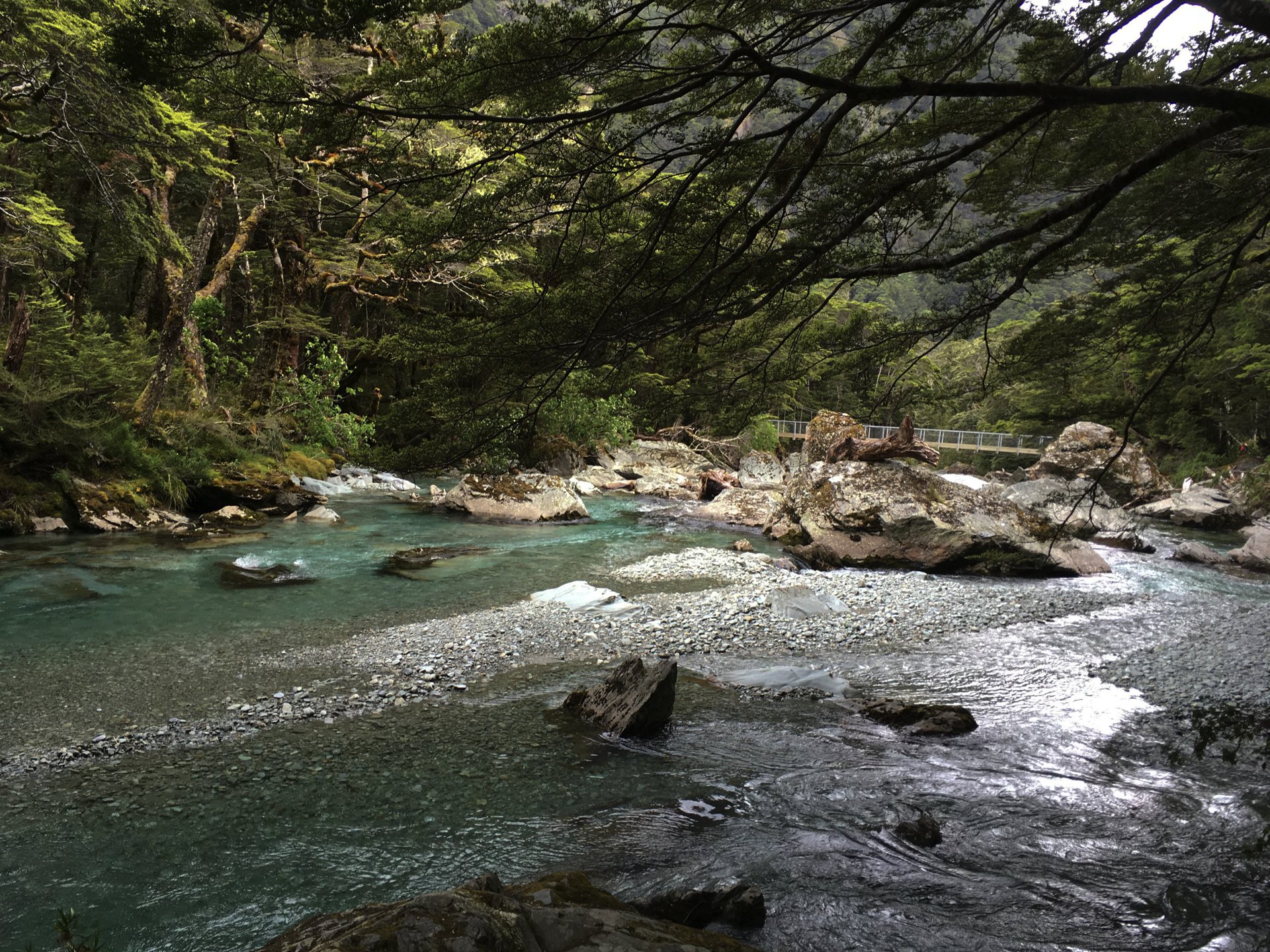
Wandering amongst the trees, walkers might have the chance of seeing if not hearing tomtits, robins, New Zealand Pigeons and bellbirds. As I continue to walk the trail, I find myself at Lake Harris (pictured below). Adjacent to Tarahaka Whakatipu, this narrow and challenging segment tests my coordination over rocks and steep steps, while I keep balance and carry my life in a pack.
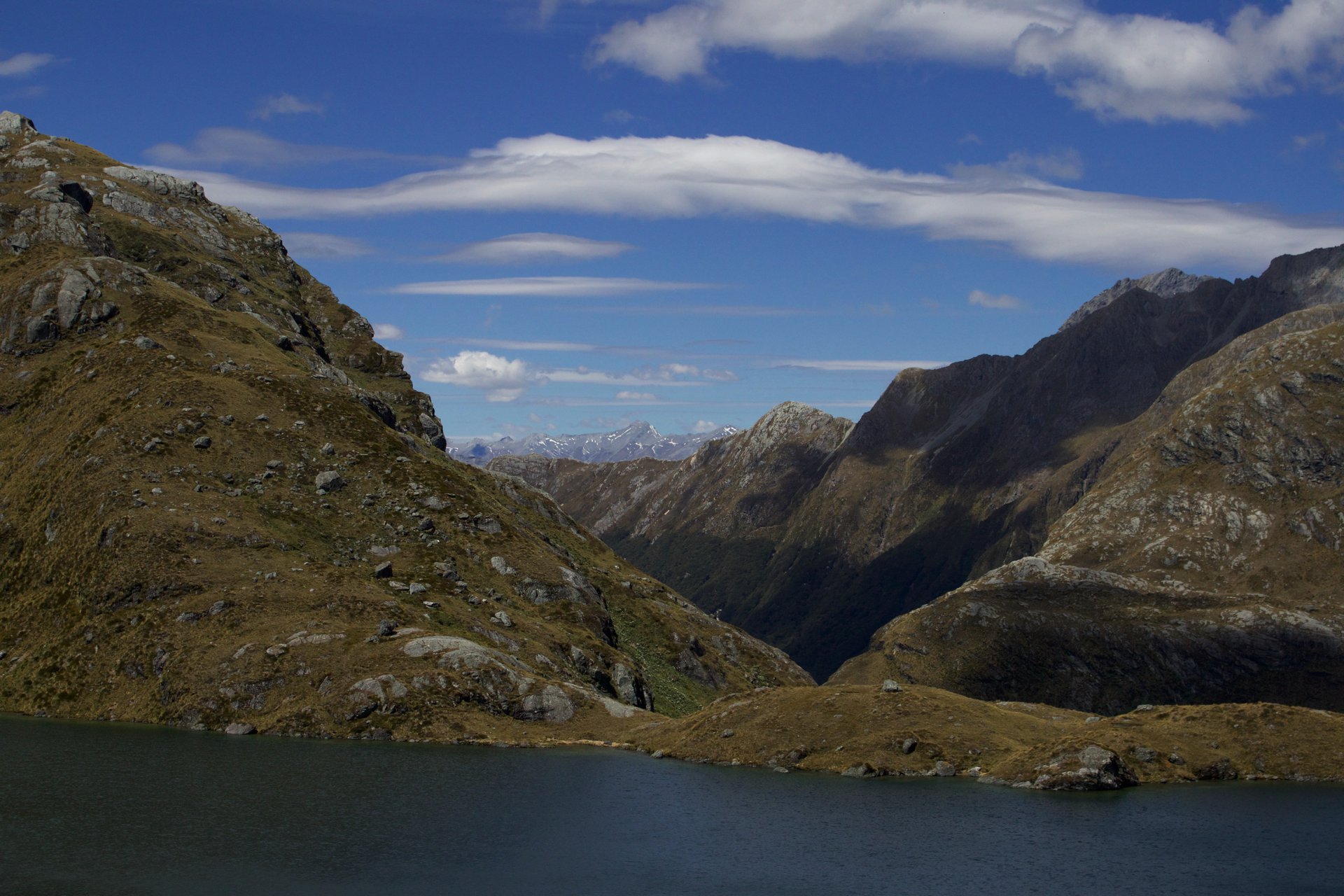
Although the varying terrain puts my pre-hiking fitness routine to the test, it is one I will never forget. It is landscapes like these that really make you appreciate natural wonders, and the idyllic purity they seem to possess; an appreciation that stems from the fear that perhaps one day, this wonder, this landscape, may no longer be here, or that it will change so much it will never be how it once was. With the ongoing threats of climate change, habitat loss, species extinction, and a growing human population, landscapes like the New Zealand World Heritage Area potentially have difficult times ahead.
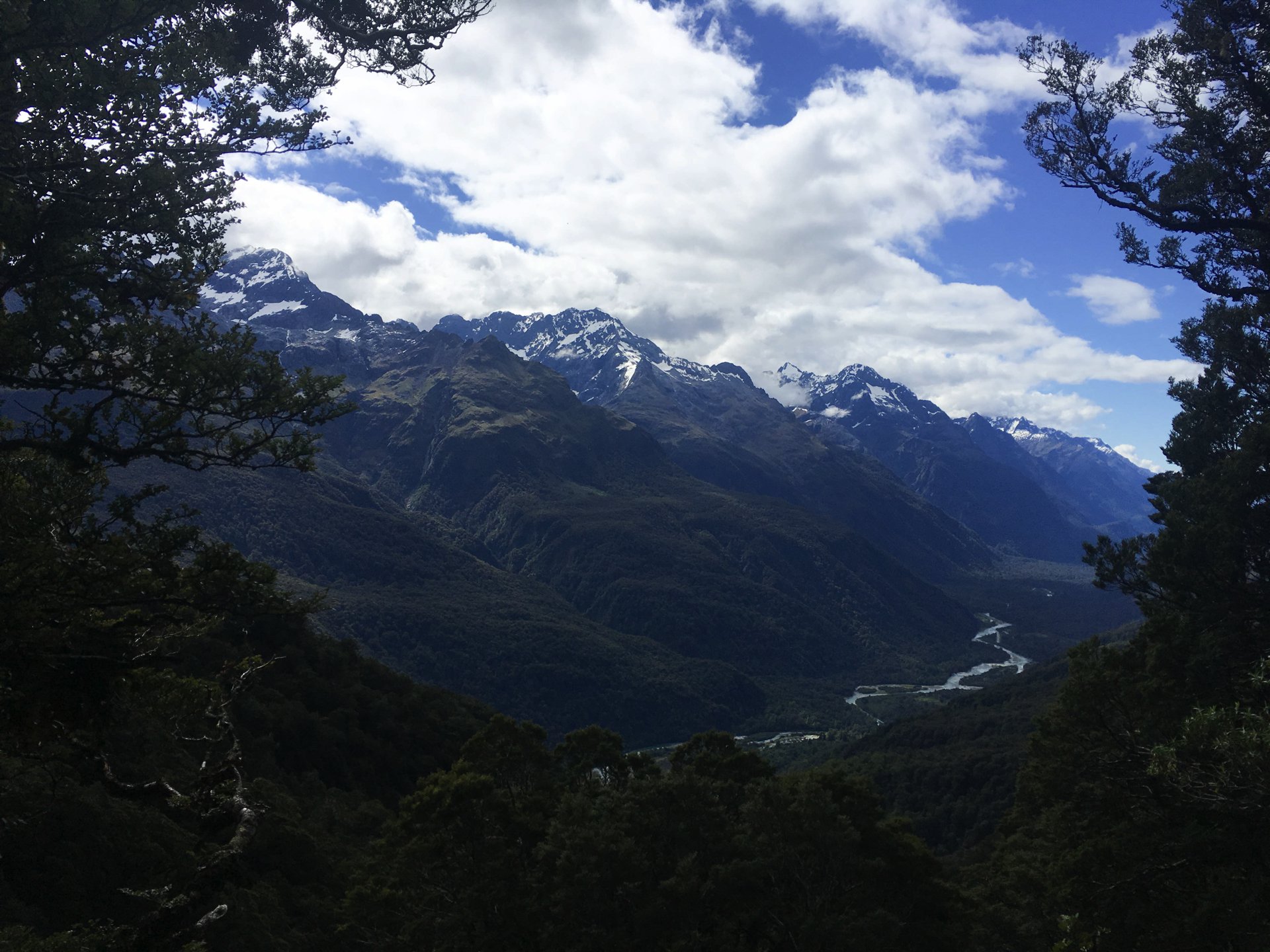
As an environmental scientist with a love for the outdoors and an appreciation for the beauty of landscapes, I know that it is areas like these, as well as areas that are less well protected, that will require extra care into the future, so that not only myself, but you, the reader, can visit or revisit this stunningly unique place.
Remember to stop and take everything in, for what it is now.
Banner image courtesy of Christine Slade.

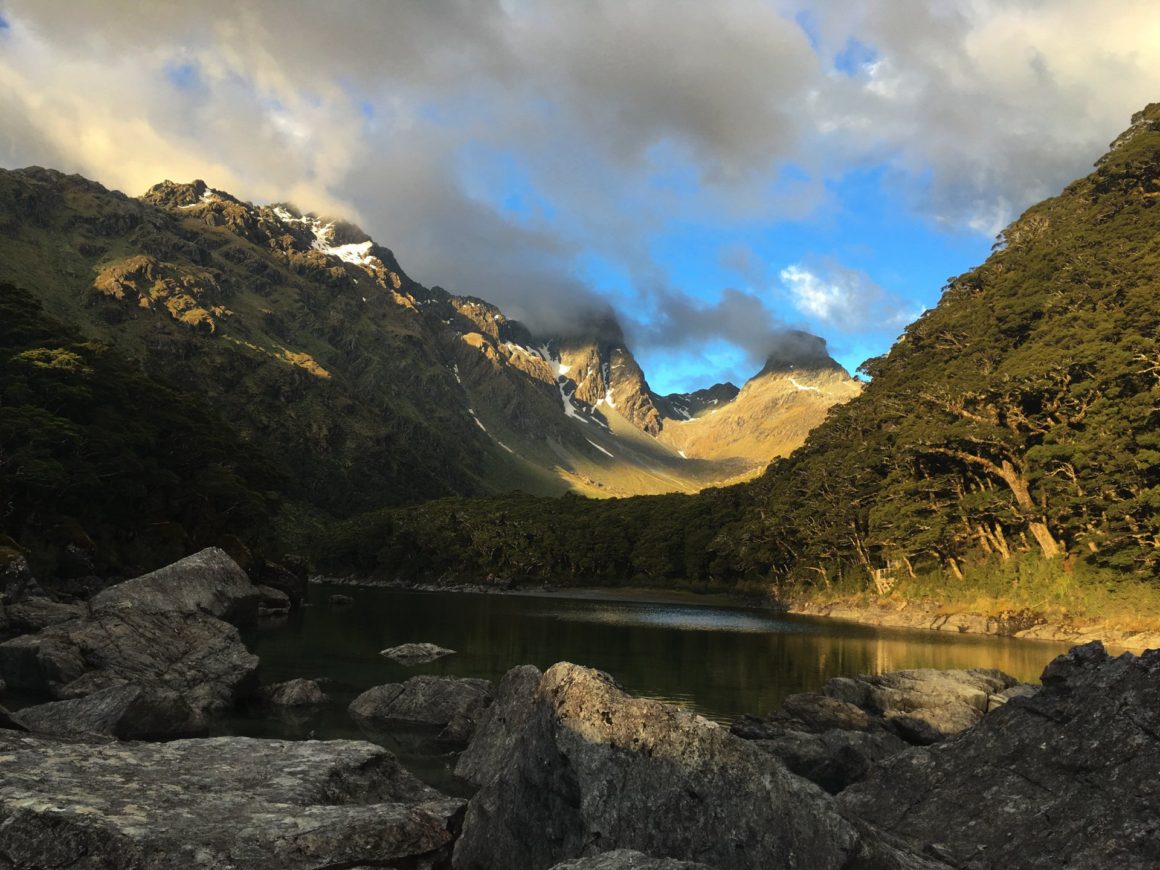
Leave a Reply